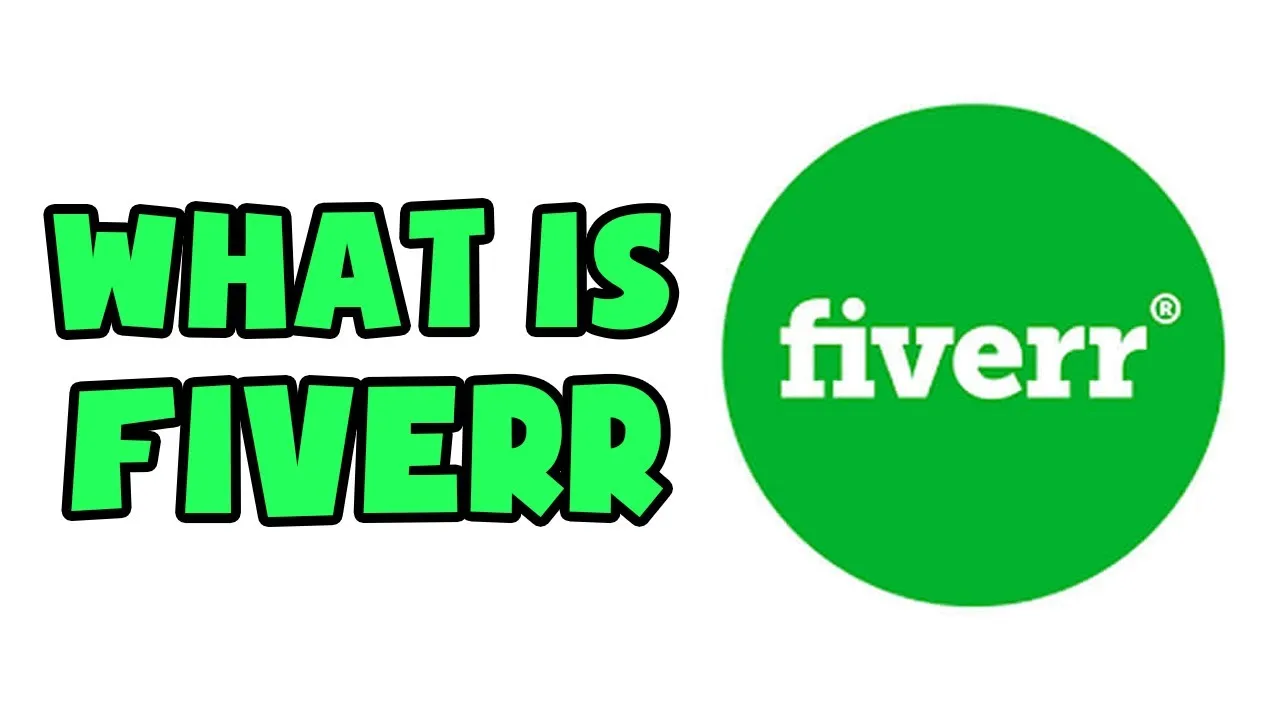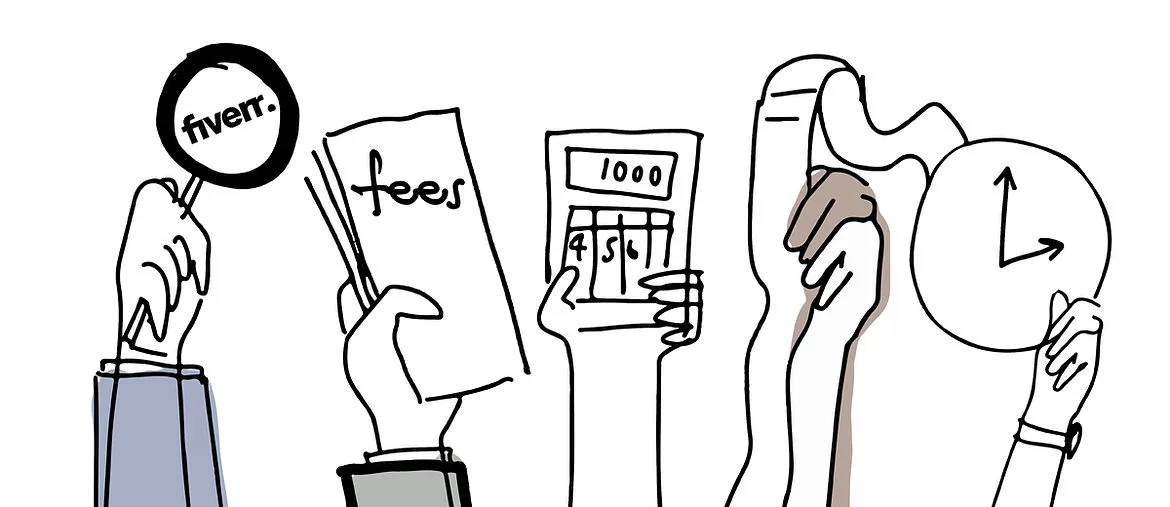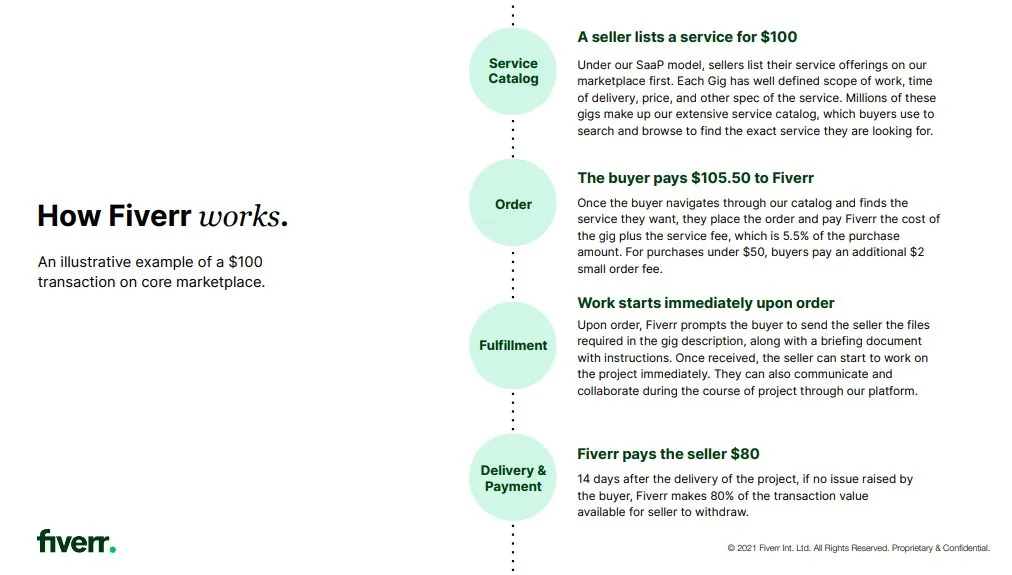Fiverr has emerged as a game-changer in the freelance marketplace, allowing businesses and individuals to connect with talented freelancers worldwide. Since its launch in 2010, Fiverr has grown exponentially, offering a vast array of services across numerous categories. Whether you need graphic design, digital marketing, writing, or even programming, Fiverr is the go-to platform for finding the right person for the job.
What sets Fiverr apart is its user-friendly interface that allows both buyers and sellers to navigate effortlessly. Freelancers, referred to as "sellers," create "gigs," which are service listings where they outline what they offer, the set price, and the delivery timelines. This transparency is beneficial for buyers, who can easily compare offerings, read reviews, and select the freelancer that best meets their needs.
Moreover, Fiverr's tiered pricing system allows sellers to offer different levels of service at varying price points. For example, a basic logo design might start at $50, while a premium offering could include multiple revisions and additional formats for $150 or more. This flexibility accommodates different budgets, making it accessible for a wide range of users.
What Are Fiverr Fees?

When using Fiverr, understanding the fee structure is crucial for both buyers and sellers. So, let’s break it down!
For buyers, pricing seems straightforward as they usually pay the listed price for a gig. However, Fiverr adds a small service fee to each order, which typically ranges from $1 to $3, depending on the total cost of the gig. This means if you buy a $50 gig, you might end up paying $53 in total. While this might seem minor, it’s essential to factor in when budgeting for services.
For sellers, Fiverr takes a commission of 20% from each completed order. For instance, if a seller fulfills a $100 order, they will receive $80 after Fiverr takes its cut. This fee might appear steep, but it covers the platform's marketing, customer support, and payment processing—all vital functions that help freelancers reach a broader audience.
Here's a quick breakdown of Fiverr fees:
- For Buyers: Service fee of $1-$3 per order.
- For Sellers: 20% commission on each order.
Overall, understanding these fees can help you make informed decisions, whether you're hiring a freelancer or providing services on the platform. It’s always wise to keep these fees in mind when budgeting for projects on Fiverr.
Also Read This: How to List WTB (Want to Buy) on Fiverr: A Step-by-Step Guide
Types of Fees on Fiverr

When you decide to dive into the world of Fiverr, it’s essential to understand the different types of fees that you may encounter. Navigating these fees can be a bit tricky if you're not familiar with them, but don't worry; I've got you covered!
Here’s a breakdown of the kinds of fees you might face:
- Service Fee for Buyers: Whenever you purchase a service on Fiverr, you’ll notice an additional service fee added to your order. This fee is generally 5% of the total order amount, with a minimum fee of $2. This means the amount you pay might be slightly more than the base price of the gig.
- Commission Fee for Sellers: If you’re a seller on Fiverr, it’s important to recognize that Fiverr takes a commission on your earnings. They typically take a 20% cut of your total earnings from each order. So, if you complete a job for $100, you’ll receive $80 after Fiverr takes their share.
- Withdrawal Fees: If you’ve earned money on Fiverr and want to withdraw it, be aware that there may be a fee depending on the withdrawal method you choose. For instance, using PayPal or direct deposit might incur different charges, so check the specifics before withdrawing.
- Promoted Gigs: If you want to give your gig a little push and get noticed, you can opt for promoted gigs. This usually involves paying an additional fee to increase visibility, which can vary based on your budget and competition.
Understanding these fees can significantly help both buyers and sellers manage their expectations when using the platform. Keep these in mind to avoid any surprises!
Also Read This: How Long for Revisions on Fiverr: What You Need to Know
How Fiverr Fees Work for Buyers

As a buyer on Fiverr, it's vital to grasp how the fee structure works to get the best value for your money. While browsing for services, you might wonder, “Why does my total cost sometimes seem higher than the gig price?” Let’s break it down!
When you purchase a gig on Fiverr, you’ll see the base price for the service and an additional service fee that helps cover platform maintenance and support. Here’s how it typically works:
| Step | Details |
|---|---|
| 1. Select a Gig | Choose a service you want to buy. Each gig will display its starting price. |
| 2. Review the Total Cost | A service fee is added during checkout, usually 5% plus a minimum fee of $2. |
| 3. Complete Payment | You pay the total cost, which includes the gig price and the service fee. |
Here’s a quick example for clarity:
If you buy a gig priced at $50, you’ll pay $50 + $2.50 (5% service fee), totaling $52.50 at checkout.
Understanding these aspects can empower you as a buyer, allowing you to budget appropriately for your projects. Knowing about Fiverr fees means you can make informed decisions, ensuring you’re not just getting a great deal, but also that you understand what you're spending!
Also Read This: What is Fiverr? A Comprehensive Guide to the Freelance Marketplace
How Fiverr Fees Work for Sellers

When it comes to selling on Fiverr, understanding the fee structure is crucial. Fiverr operates on a simple principle: the platform earns its profit by charging fees on the services sold, which means sellers must factor these costs into their pricing strategy.
As a seller, you will encounter two main types of fees:
- Service Fee: Fiverr charges a 20% service fee on all transactions. This means, if you sell a gig for $100, you’ll receive $80. This fee covers the platform's operational costs, including hosting, customer support, and marketing.
- Withdrawal Fee: When cashing out your earnings, Fiverr also imposes a withdrawal fee. This fee varies depending on the payment method you choose. For instance, bank transfers may have a higher fee compared to PayPal withdrawals.
It’s essential to keep in mind that Fiverr deducts these fees automatically, so the amount you see in your earnings is already adjusted. Additionally, if you’re a seller in different categories, remember that some gigs might have additional fees depending on their complexity. Also, remember that your gig prices should accommodate for these fees to ensure your earnings align with your expected income.
In short, to maximize your earnings on Fiverr, understanding how these fees work can help you set realistic prices that still attract buyers while ensuring you maintain profitability.
Also Read This: How Much Can I Earn on Fiverr?
Tips to Minimize Fiverr Fees
While Fiverr fees are a part of the platform, there are ways to minimize their impact on your earnings. Here are some practical tips to help you keep more of your hard-earned money:
- Bundle Services: Instead of selling multiple individual gigs, consider bundling related services into one package. This way, you can offer higher-priced gigs and reduce the overall percentage that Fiverr takes.
- Increase Your Prices: Don’t hesitate to price your services a bit higher to cover the fees. Clients often associate higher prices with better quality, and if they value your expertise, they may be willing to pay more.
- Leverage Fiverr Pro: If you’re eligible, consider applying for Fiverr Pro. While there are still fees, being a Pro seller can help you attract higher-paying clients who are willing to invest in top-tier services.
- Optimize Your Gigs: Invest time in improving your gig descriptions, images, and SEO. Better-ranking gigs tend to attract more traffic, leading to increased sales and offsetting the fees.
- Explore Direct Payments: If you have a strong client base, see if you can negotiate direct payments outside of Fiverr for repeat work. Just be cautious, as this goes against Fiverr’s terms of service and could lead to account suspension.
By implementing these tips, you can effectively navigate Fiverr's fee structure and keep more of your earnings, allowing you to grow your freelance business with confidence.
Understanding Fiverr Fees: What You Need to Know
Fiverr is a popular online platform that connects freelancers with clients seeking various services, from graphic design to software development. While the platform offers a convenient way to find and hire talent, understanding the associated fees is crucial for both buyers and sellers. This post will delve into the different types of fees Fiverr imposes and how they impact your experience.
Types of Fiverr Fees
There are primarily two types of fees on Fiverr:
- Service Fees for Buyers: When clients purchase services on Fiverr, they incur a service fee based on the order total. This fee structure is as follows:
| Order Amount | Service Fee |
|---|---|
| $0 - $40 | $2 |
| $40+ | 5% of the total order amount |
- Commission Fees for Sellers: Fiverr takes a commission on sales made by freelancers. The standard commission fee is 20% of the total order price, which may significantly impact your earnings.
Additional Considerations
Freelancers should also be aware of these additional fees:
- Payment processing fees, which may apply depending on the payment method used.
- Currency conversion fees for international transactions.
Understanding these fees can help both buyers and sellers make informed decisions and plan better for their projects on Fiverr.
Conclusion: Navigating Fiverr Fees Effectively
By grasping the structure of Fiverr fees, freelancers and clients can maximize their experience on the platform, ensuring strategies are in place for budgeting and pricing, thereby enhancing their overall effectiveness in utilizing Fiverr’s services.



